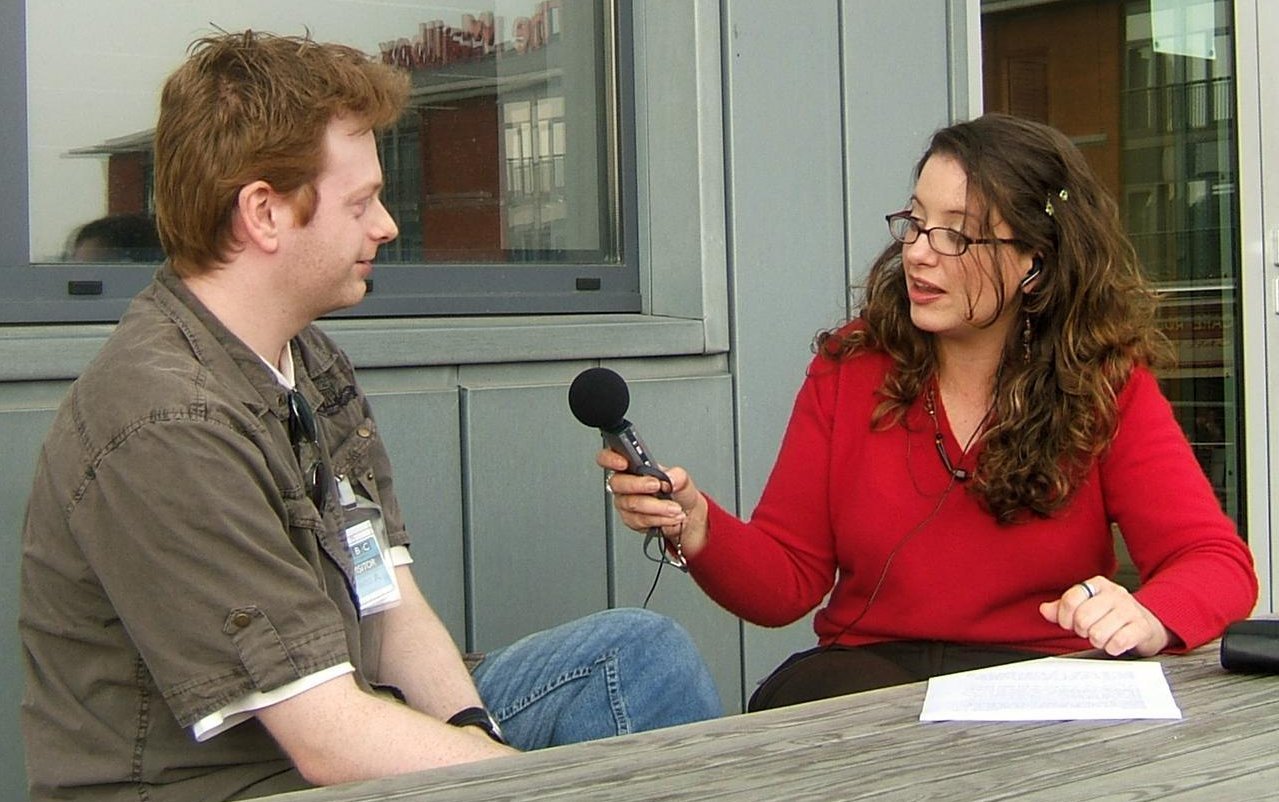Building Buzz For Your Short Film: Marketing And Communication For Beginners
Stop the presses! I’m releasing my short film. Photo: The Library of Congress, via Flickr
Want to create and maintain interest in your short film? You need to harness the power of marketing and communications.
Strategic thinking will give your film the best possible chance of being seen by the maximum number of people. The handy tools and tips below will help you put together a simple marketing and communications plan to shine the spotlight on your film.
TAKE EVERYONE WITH YOU ON THE JOURNEY
Just as you need to hook the viewer in during the first moments of your film, think about the promotion of your film as soon as you begin the project. Why is this a story that must be told? What makes it special? Why should people spend their finite resources watching it? Write the answers down and remember them throughout your filmmaking process.
At the script-writing stage, ask yourself those questions again, and work to craft unique, compelling characters and a story that will get people talking.
Create an email list
Every time you meet people who help you develop and grow your story idea, or contribute to its creation, write down their contact details. A simple spreadsheet will do. This way you can ensure you thank everyone, and keep them updated with your progress. Keeping them in the loop will ensure they stay invested in the success of the project. Build a network of these informal ambassadors for your project and they’ll help you spread the word when the time is right.
Build a website
Build a website before you even start shooting. Your film community needs a home base; a place where people can find the most up-to-date information about your movie. Don’t feel like you have to go flashy, keep it simple and succinct. You should start with a short synopsis, plus some early design imagery. You can update these elements later as your project evolves.
As the film progresses through to production and post-production, you can add cast and crew information. Later, when the website becomes a place to promote your film to the wider public, you can also add locations where people can see the film, lists of festivals it’s screened at and any awards won.
Tip: Make sure you use meta-tagging to improve your Google search ranking and allow people who are searching for your film to find it easily.
A website dedicated to your film means interested people can easily find out the latest news. Photo: Tronathan (CC BY-NC 2.0, Creative Commons License), via Flickr
TRAILER TALK
Once your film is done, you will need a trailer. Work with an experienced editor to craft something powerful that captures the essence of your story. Ensure this is available in a format you can upload online, so you can add this link to your EPK and have it available to send to festivals and media.
CREATE AN EPK
It would be unusual to have a unit publicist involved in the production of a short film, but someone needs to do their job – ensuring all the right promotional materials are collected during the production phase. Ensure you (or someone from your team) captures high-resolution photographs of the major moments happening both in front of and behind the camera for your EPK.
What is an EPK? Your electronic press kit is a one-stop shop for the promotion of your film. Make sure it is interesting, informative and has all the key information that is required to promote your film to the world. This means:
Title
Length
Country of origin
Names of key cast and crew: director, writer, producer and lead actors only
Short synopsis: 1-2 lines long, and also known as a tagline. Make it catchy and succinct
Extended synopsis: 1-2 paragraphs long. Take us on the journey and make us want to watch your film, but don’t be too literal or give the whole plot away
Festivals and awards: where your film has screened and awards won so far
Press: key reviews and media stories so far
Funding: list the funding bodies and sponsors who have invested in the project
Copyright information: i.e. ©Showstopper Films, Jane Doe 2015
Photographs: choose 2-3 ‘hero’ images that best represent your film, as well as a head shot each of the director and lead actors. Ideally, print publications need images that are high resolution (at least 1MB in size) and in jpeg format. Smaller file sizes are often acceptable for websites
Website address
YouTube or Vimeo link to your trailer
Bios: Take 15 minutes to interview each of your key cast and crew, and gather a paragraph of biographical information about them. Note their career achievements to date, a list of previous credits, and a few facts or highlight stories. You also want to know where they live and where they grew up, as your publicist may need to target stories to geographic regions later.
The EPK will be sent to festival programmers and media, so it’s important that it has all the information they may need, correct and up to date. Once completed, you can add your EPK to your website so media and festival organisers can easily access and download it.
Tip: Ensure all your media collateral and social-media platforms include a link to your website, so you lead people back to your home base.
It’s important to manage photos and posts going out on social media so you can maximise their effectiveness. Photo: MKHMarketing (CC BY 2.0, Creative Commons license), via Flickr
BE SELECTIVE ABOUT SOCIAL MEDIA
Controlling the release of information about your film so it can be released in a strategic fashion is essential.
Posting or blogging about your project via social networks during production can be a useful marketing activity. But you don’t want your key publicity images leaking out early so that you have nothing new to publish later. And you don’t want crew members posting negative stories about long days or an outbreak of food poisoning on set!
The best policy is to ensure cast and crew stick to a strict media and social media embargo. Ask them not to post anything at all about the project unless they clear it with you or a designated team member. Then you or this team member can release carefully crafted progress updates throughout the process.
Be selective about your choice of social media, and realistic about how much time you have to maintain these accounts. It’s not true that promotion via social media is free – it takes a lot of time and resources to build a powerful social media presence, so choose wisely. If you are a busy person with a small team, we recommend selecting just one or two social media platforms for the promotion of your film: Facebook is popular, but you could also create an interesting profile on Twitter, Instagram, Pinterest or a vast number of others. Think about which platforms your audience are likely to use, and how you can use the platform to build meaningful relationships with them.
Engage with your audience and build followers by posting regularly with interesting, relevant content.
Tip: Remember to link in with the social media accounts of festivals and events that your film screens as part of, and ensure they know your film’s social media handles so they can link back to them.
Invite local media on set during filming to start building interest around your film. Photo: Lee Jordan (CC BY-SA 2.0, Creative Commons License), via Flickr
HOW TO GET PUBLICITY
You may want to invite some local media to the set during production, to build awareness and support from the local community. Small town and regional media should be pretty receptive to an email from you. When they visit, ensure there is someone to hand who can host them, answer questions and keep them out of harm’s way.
Tip: Schedule a media visit for just before lunch, then invite them to join you to eat so they can chat with the director during the break.
If your film is part of a festival, they will already be doing their own publicity that includes your film. You can help maximise their effort. Do your best to provide all the information and collateral they require, and make yourself available for any interviews they set up. You can also piggyback off their publicity by doing some of your own – this is where those short bios about your key cast and crew will come in handy, for deciding on which story angles might be of interest to specific publications.
When it comes to communicating with journalists about the release of your film, unless you already have a good media network, you need a professional. Publicists are inexpensive and bring a huge amount of value, so you should consider contracting one for this purpose. A good publicist can write a targeted media release for you about the release of your film and why it is exciting, and then send it out to reach all relevant media professionals. A professional publicist’s existing media relationships will ensure a higher chance of achieving successful story placements. To help them out and save time (and money if you are paying by the hour), you can provide a first draft of a media statement and send them your EPK.
IS ANYTHING PRINTED THESE DAYS?
Posters and flyers are sometimes useful for festivals and event screenings. Get something designed, ideally by a professional, that reflects the tone and style of your film. Add the title of your film, your tagline or short synopsis, website address, and any awards won. These can be distributed to cafes and poster sites by a distribution company, or you may hand them out yourself.
Tip: If you are printing flyers or posters to promote a specific screening, make certain the date, time and location information are included correctly. It sounds basic, but you’d be surprised how a simple typo can affect your audience numbers.



